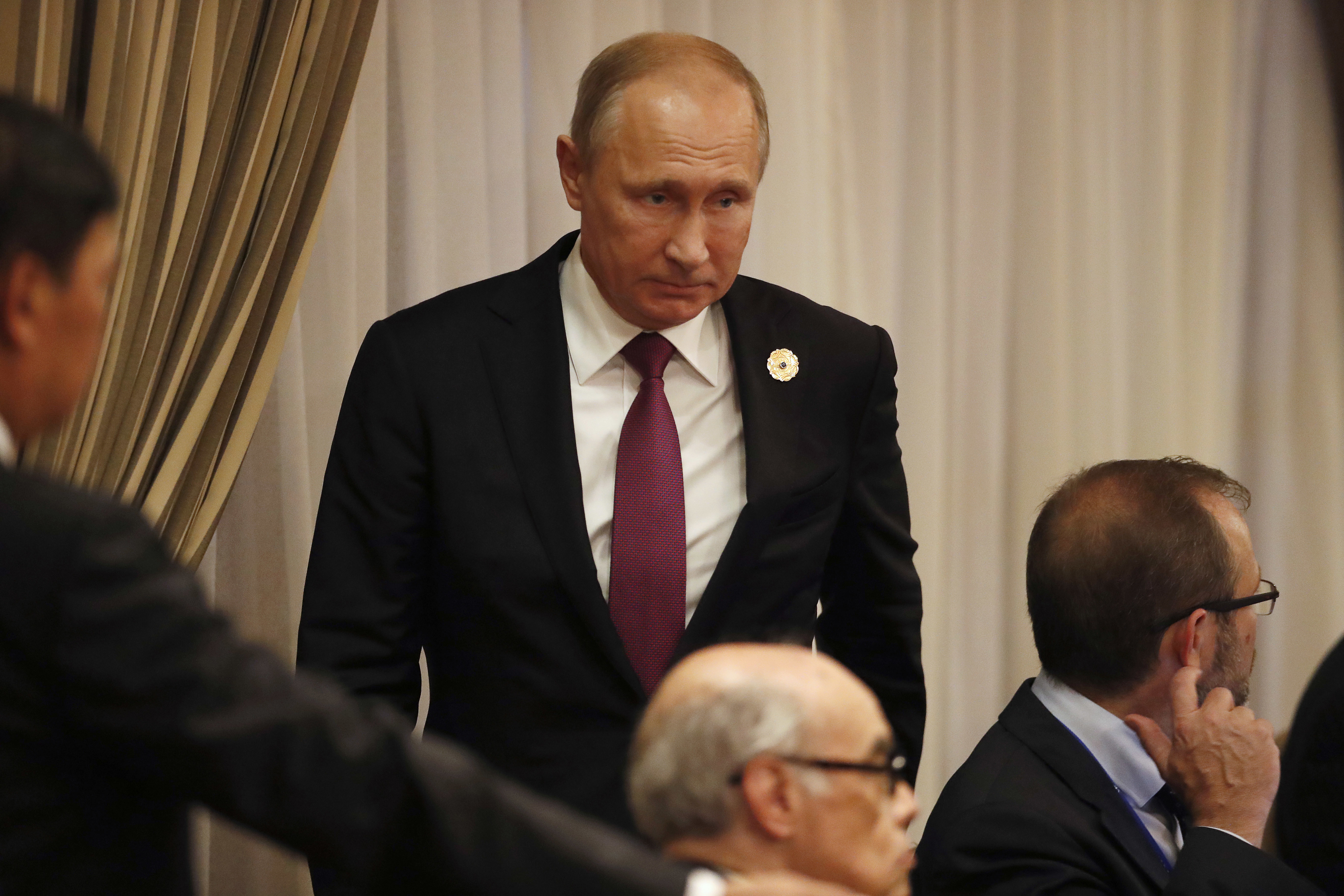
By JOSH LEDERMAN MATTHEW LEE Associated Press
WASHINGTON (AP) — As the Islamic State group nears defeat, the United States and Russia are discussing next steps that could prevent the two military powers from inadvertently clashing in Syria and improve prospects for an end to the country’s brutal civil war.
Fears about how the messy array of forces active in Syria may collide have grown as IS loses its last major stronghold and the focus shifts back to Syria’s intractable conflict between President Bashar Assad’s government and opposition groups. For the U.S. and ally Israel, a key concern is that foreign powers such as Iran will now dominate the country’s future.
U.S. officials said an agreement under discussion in recent days would focus on three elements: “deconfliction” between the U.S. and Russian militaries, reducing violence in the civil war and reinvigorating U.N.-led peace talks. The officials weren’t authorized to discuss the deliberations and requested anonymity.
Yet it was unclear whether the U.S. and Russia would ultimately reach any understanding.
“Why are you asking me? Ask the Americans,” snapped Russian Foreign Minister Sergey Lavrov after a potential meeting Friday between President Donald Trump and Russian President Vladimir Putin was scrapped.
The United States had hoped that if the countries could show significant progress on a major global issue, it could serve as the basis for a meeting between Trump and Putin, who could then discuss and announce it during a summit in Vietnam.
In behind-the-scenes negotiations, the two sides tried to formulate some framework of a deal, two administration officials said. Though North Korea and the Ukraine were discussed, the focus was on a Syria agreement.
“We have been in contact with them, and the view has been if the two leaders are going to meet, is there something sufficiently substantive to talk about that would warrant a formal meeting?” Secretary of State Rex Tillerson said Thursday in Beijing.
The Russians told reporters such a meeting was likely and that the time and place were being arranged. But talks stalled. Blaming scheduling conflicts, White House Press Secretary Sarah Huckabee Sanders told reporters that the meeting was off just minutes before Air Force One touched down in Vietnam.
Still, the leaders shook hands Friday on the sidelines of the summit, and Sanders said it was possible Trump and Putin could interact in an informal setting. Both Trump and Putin also plan to be in the Philippines later in the week, where it’s possible they could cross paths again.
Russia and the U.S. have maintained a “deconfliction” hotline for years to avoid unintended collisions and even potential confrontations as they each operate in Syria’s crowded skies. A heavy air campaign by Russia has been credited with shoring up the position of Assad, a close ally of Moscow.
With IS nearing defeat, the U.S. and Russia are losing their common enemy in Syria and will remain in a proxy battle in which Russia backs Assad and the U.S. lends at least rhetorical support to armed opposition groups fighting the government. That has increased the need for close communication between the two powers about where their forces are operating at any given time, officials said.
The agreement also seeks to build on progress in establishing “de-escalation zones” in Syria that have calmed some parts of the country. In July, when Trump held his first meeting with Putin in Germany, the U.S. and Russia announced a deal that included Jordan and established a cease-fire in southwest Syria. The United States has said that cease-fire has largely held and could be replicated elsewhere in the country.
A key U.S. concern, shared by close ally Israel, is the presence of Iranian-backed militias in Syria that have exploited the vacuum of power. The United States and Israel have been seeking ways to prevent forces loyal to Iran — Israel’s archenemy — from establishing a permanent presence. One idea hinges on a “buffer zone” along Israel’s border with Syria.
Yet U.S. and Russian interests diverge when it comes to Iran’s role in Syria. Tehran, like Moscow, has been staunchly backing Assad, as it works to establish a corridor stretching from Iran through Iraq and Syria and into Lebanon.
A third element of the deal would reaffirm support for the United Nations effort being run out of Geneva to seek a political transition in Syria and resolve the civil war. The United States and Russia have been at odds for years over whether Assad could be allowed to remain in power in a future Syrian government.
The U.N. talks, which have come in fits and starts without yielding significant progress, aren’t the only discussions about Syria’s future. Russia, Turkey and Iran have been brokering their own process in Astana, Kazakhstan. The U.S. views those talks warily because of Iran’s involvement, though they’ve led to local cease-fire deals that have reduced violence, too.
“We believe that the Geneva process is the right way to go,” State Department spokeswoman Heather Nauert said Thursday. “Unfortunately, it is a long way off, but we’re getting a little bit closer.”
The U.S.-Russia deal may also seek to expand the mandate of a joint “monitoring center” established this year in Amman, Jordan, to watch for cease-fire violations and other developments on the ground. It has focused on southwest Syria, where the cease-fire is in place, but could be used to monitor broader stretches of the country.



















